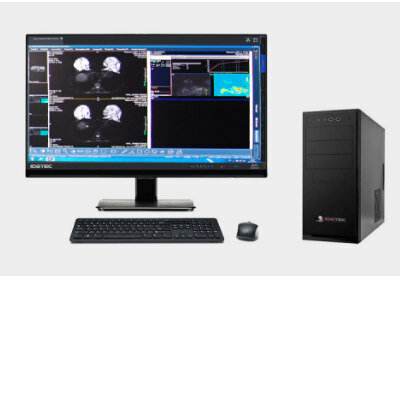Cervical Cancer Screening with MRI and PET/CT Improves Treatment Chances
By MedImaging International staff writers
Posted on 25 Mar 2009
Pretreatment screening with magnetic resonance imaging (MRI) and positron emission tomography/computed tomography (PET/CT) for cervical cancer may lead more women to optimal therapy choices and spare many women potential long-term morbidity and complications of trimodality therapy (surgery followed by chemoradiation), according to a recent study.Posted on 25 Mar 2009
An interdisciplinary team of investigators from the Institute for Technology Assessment (Boston, MA, USA) developed a decision-analytic model to determine the benefits of pretreatment imaging with MRI and/or PET/CT in patients with FIGO stage IB cervical cancer. "Stage IB cervical cancer, in the absence of pretreatment imaging, is treated with surgery. As surgery cannot completely resect the cancer in many of these patients, they receive postsurgical chemoradiation, i.e., trimodality therapy,” said Pari Pandharipande, M.D., and lead author of the study. "The goal of pretreatment imaging is to identify these patients noninvasively, spare them surgery, and have them treated with chemoradiation alone,” she said.
The study's findings demonstrated that while imaging does not improve survival, PET/CT resulted in the highest percentage of patients receiving appropriate primary therapy (89%) and use of both MRI and PET/CT spared the most patients of trimodality therapy (95%).
According to Dr. Pandharipande, pretreatment imaging can provide patients with the best primary treatment choices that minimize the risk of long-term complications and morbidity while safeguarding chances for survival. She added that because both over- and underestimation level of disease can result in unfavorable patient outcomes, determining the extent of disease accurately immediately is crucial. For example, when patients are subjected to pelvic surgery, and then are radiated in the same operative field, complication rates can increase by a considerable proportion, as compared to if they were just treated with surgery alone or chemoradiation alone.
Dr. Pandharipande reported that this study demonstrates how pretreatment imaging may improve chances of successfully receiving surgery or chemoradiation instead of both. "MRI and PET/CT are expensive, but long-term consequences of trimodality therapy can severely affect long-term quality of life and are also expensive. Further study of these long-term consequences is needed to more precisely consider the cost implications of upfront MRI and PET/CT. Currently there are no specific guidelines that prescribe MRI or PET/CT for determining a plan of action for the treatment of stage IB cervical cancer patients. It remains important for patients to make imaging and treatment decisions with their gynecologic-oncologist on a case-by-case basis,” stated Dr. Pandharipande. "My goal as a researcher in radiology is to continue to objectively look at what we do and how it impacts patient care. A better understanding of what happens to people after they receive imaging tests both improves patient care directly and focuses further research efforts in areas most influential to patient outcomes.”
This study appears in the March 2009 issue of the American Journal of Roentgenology (AJR).
Related Links:
Institute for Technology Assessment














